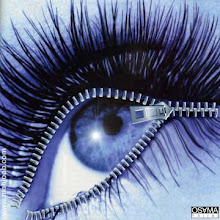Unfortunately, my habit of leaving everything to the last minute is clearly noticeable on this blog. Just as with Crash, where I arrived breathless on the very last day of exhibition, I got to the British Museum, the day before the last of the Revolution on Paper. Apologies, but it is a must see exhibition, so drop everything on your all-too-hated Monday, and take a walk through the wonderfully funny and socio-politically insightful prints from the early 20th century Mexico.
Ok, there is a slight possibility that I might be a bit bias about this exhibit. Having lived in Mexico for three months, it is only natural that I may feel a deeper connection with the contents of the prints. I highly doubt, for example, that anybody would feel the sort of piss-myself excitement of looking at a nude sketch of Dolores Olmedo by Diego Rivera, had you not wondered her beautiful gardens with peacocks, house-galleries filled with a unique and magnificent collection of works by Frida Kahlo and Rivera and played with the almost-extinct Xolo dogs (that are bald!) in the shade of the maguey cactuses. Or looking at fragement sketches of Orozco's murals, and feeling the pangs of acutely tear-jerking nostalgia, recalling standing in front of and admiring the full mural of Omniscence, stretching two stories, at the Casa de los Azulejos in the heart of Mexico DF.
But even if you don't possess this over the top sentimental attachment to the country, it is nevertheless worth inspecting a nation's struggle for independence from the point of view of shrewd visual commentary. It is also the most extensive such exhibition ever put on in the UK, and you can discover such 20th century art-celebrities as 'Emiliano Zapata and his horse' by Diego Rivera, or observe the ever-present relevance of criticism of capitalist media control, or the Churches fight against secularism and its bullying of indigenous cultures into mix-and-matching local and Catholic religion.


Emiliano Zapata and his horse, Diego Rivera, 1932, lithograph © 2009, Banco de Mexico Diego Rivera & Frida Kahlo Museums Trust, Mexico D.F. / DACSFair enough, you don't really have to 'discover' this one, it is the first thing you see as you walk into Room 90. It's good it doesn't poke your eyes out.
José Chávez Morado (1909 - 2002)
The Laughter of the Public - away with your nonsense
1939, Lithograph
A gachupín commonly refers to an immigrant especially a Spaniard in Mexico. The gachupín here is tooting the horn of 'Free Press', which, according to the little limerick on the side is 'Is neither free and is neither press', it is essentially a mouthpiece for pro-fascist propaganda.
José Chávez Morado (1909 - 2002)
Symbiosis, c1940, Lithograph
A beautifully simple representation of a painfully complicated and sensitive subject. The Christianization of the indigenous population in Mexico was a forceful and sometimes violent process. It is very interesting to see how not only Christian churches were built upon the ruins of destroyed sanctuaries of the natives, but how Christian traditions and the cult of the saints were built on local ceremonies and superstitions.

Leopoldo Méndez (1902 -1969)
Poltical piñata, 1936, Woodcut
The piñata represents President Plutarco Elias Calles and his Constituional Revolutionary Party, which is represented as a disguise for Capitalism. The worker using the baton marked 'Feliz Año 1936' is cheered on by a group of spectators, showing that the print could have possibly been designed as a holiday card, hoping for the defeat of Calles and Capitalism in the coming year.
José Guadalupe Posada (1852-1913)
A Skeleton from Guadalajara, 1910
Photo-relief and letterpress
'The word Tapatia in the title is used colloquially in Mexico to describe people from the city of Guadalajara, which is regarded as the city that most fully embodies Mexican identity. The verses, written in the first person, recount the way in which the skeleton has defeated people from other states in fights. The scene is set in a Mexican cantina, a bar traditionally reserved for men, and a likely home for such a macho figure, even if a female skeleton is peering over his shoulder.' (quote: the little tablet next to the print)
Of course I couldn't resist the temptation of purchasing the book (it was half off!!) which contains all the prints and others not included in the exhibit, and extensive history of the era and background on its artists! A treasure for all lovers of Mexico!
So go ahead and don't do what you are suppose to tomorrow, and enjoy the savvy puns made at the expense of political climate, capitalism, religion and everyday Mexican life, which are not without actuality for today's casual museum-goer and occasional thinker.








Oh man I wish I was there... sounds like a great exhibit. Can't remember the last time I went to a museum or gallery... oh crap, here comes the traveller's guilt again. Thanks a mill hon :)
ReplyDelete